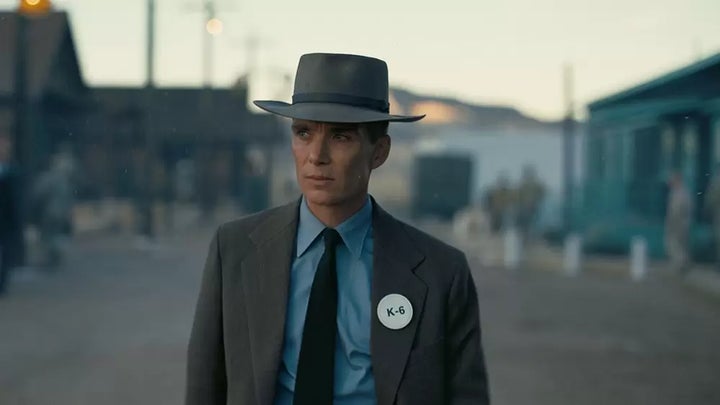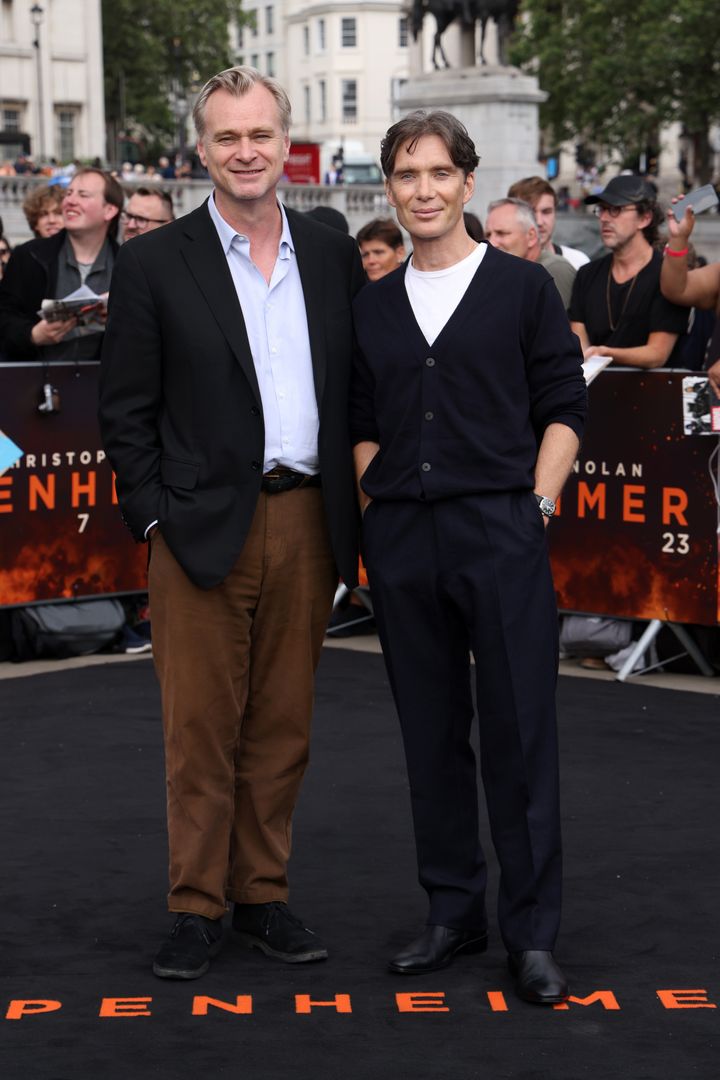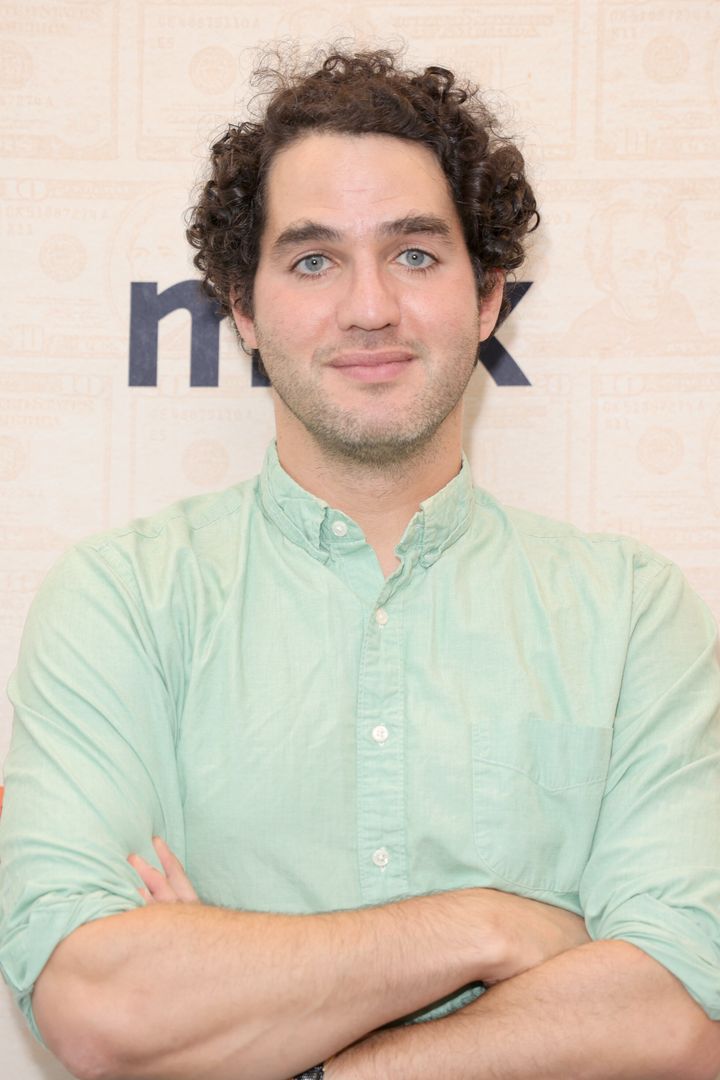
Clocking in at just over three hours, Christopher Nolan’s Oppenheimer is his longest and arguably most ambitious film yet.
The biopic sees Cillian Murphy giving a sure to be Oscar-nominated performance as the titular physicist, who is known as the ‘father of the atomic bomb’.
Its not just the lead star who is being tipped for award season glory either, with his cast mates, director Nolan and the film’s sound, special effects and wardrobe teams also likely to make it onto shortlists.
We’re still many months away from the Golden Globes and Oscars nominee announcements but to tide you over, here are 15 behind-the-scenes facts that remind you just how impressive Oppenheimer is...
The Trinity Test recreation was filmed without special effects
Nolan is no stranger to recreating dramatic events on the big screen but in perhaps his most ambitious move yet, the director decided to film the atomic bomb test without using any CGI or visual effects. That means what you see on screen really did take place – although on a smaller scale.
Visual effects supervisor Scott R. Fisher has explained how his team created real ‘miniature’ explosions and filmed those.
He told Total Film: “We don’t call them miniatures; we call them ‘big-atures’. We do them as big as we possibly can, but we do reduce the scale so it’s manageable.
“It’s getting it closer to the camera, and doing it as big as you can in the environment.”
In order to create the intense burning created by the successful test run, Scott’s team used gasoline and propane, while aluminium powder and magnesium were added to replicate the blinding white light of a nuclear explosion.
Scott added: “We really wanted everyone to talk about that flash, that brightness. So we tried to replicate that as much as we could.”
The opening Prometheus quote is a nod to Nolan’s source material
Oppenheimer opens with an ominous opening caption, which reads: “Prometheus stole fire from the gods and gave it to man. For this he was chained to a rock and tortured for eternity.”
The film is based on Kai Bird’s 2005 Oppenheimer biography American Prometheus and explaining the comparison, Kai writes in his book: “Like that rebellious Greek god Prometheus—who stole fire from Zeus and bestowed it upon humankind, Oppenheimer gave us atomic fire.
“But then, when he tried to control it, when he sought to make us aware of its terrible dangers, the powers-that-be, like Zeus, rose up in anger to punish him.”
Cillian Murphy got his role without auditioning

Oppenheimer marks Christopher and Cillian’s sixth film together – following the Batman trilogy, Inception and Dunkirk – and given their close relationship, the Irish actor no longer needs to audition for roles.
During an interview with Radio 2, Cillian recalled the moment when he received a casual call from Nolan, who explained he had the perfect lead role for him.
“If you’re lucky you get one or two of those [calls] in your career, you know?” he said. “It was the best, best feeling. It was kind of euphoric, and then you go ‘oh that’s a lot of work’. So I immediately just started working.
“I had like six months before, between when he called me and we started the shoot. The script was solid and was there. It was one of the greatest scripts I’ve ever read. It was magnificent.”
The cast lived together during filming
Oppenheimer sees America’s greatest scientific minds living together at the Los Alamos facility in New Mexico and for the movie, Nolan also moved his cast and crew into digs together.
Emily Blunt likened the situation to ‘summer camp’ and told People: “We were all in the same hotel in the middle of the New Mexican desert. We only had each other.”
But Cillian skipped their group hangouts

Longterm pals Emily and Matt Damon organised group dinners for the cast during filming – but the former’s on-screen husband RSVP’d with a firm no.
Mary Poppins actor Emily added to People: “The sheer volume of what he had to take on and shoulder is so monumental.
“Of course he didn’t want to come and have dinner with us.”
Cillian added: “You know that when you have those big roles, that responsibility, you feel it’s kind of overwhelming.”
Another contributing factor was the Irish star’s strict diet, as he lost weight to play the scientist, who in real-life subsisted on cigarettes, martinis and not so much food.
“He was losing so much weight for the part that he just didn’t eat dinner, ever,” Matt told Entertainment Tonight.
The hard to hear dialogue is (sort of) intentional
While Oppenheimer is very much deserving of its five-star reviews, cinema-goers have complained about one thing: the sound levels.
Posting on social media after seeing the movie, numerous fans noted that some of the speech sounds muffled and exchanges on-screen can sometimes be difficult to fully hear.
This is down to the fact the IMAX cameras used by Nolan aren’t soundproofed.
Most directors would work around this by getting actors to re-record dialogue in post-production to make it clearer, but this is something he isn’t a fan of.
“I like to use the performance that was given in the moment rather than the actor re-voice it later,” Nolan told Insider. “Which is an artistic choice that some people disagree with, and that’s their right.”

The script was written in first person
In another unusual move, Nolan wrote the script in first person in order to reflect how most of the film is being told from Oppenheimer’s perspective and using his memories.
Matt Damon told Vulture: “I’ve never seen that done before. Instead of ‘Oppenheimer walks across the room,’ it’s ‘I walk across the room.’ This was a way for him to signal that, Okay, this is what the movie’s going to feel like. It’s going to feel immediate.”
Kodak had to manufacture a new type of film especially for Oppenheimer
Film purist Nolan filmed the biopic on large format cameras with IMAX 70mm film, but there was one small problem.
Oppenheimer features two timelines with one in colour and another in black-and-white. Unfortunately, black and white IMAX 70mm film didn’t exist so cinematographer Hoyte van Hoytema put in a call to Kodak.
He told Variety: “They came out with test rolls for us to run through our camera. We had to re-engineer our cameras a little bit, and we had to remake our pressure plates and our backend lab work needed to be readjusted.”
“I do remember when Chris and I were sitting in the cinema and watching the results of our first black and white test and it was just freaking amazing. We had never seen anything like it.”
Cillian had no physics knowledge – but one co-star was well-prepared

The Inception star has admitted that he doesn’t “have the intellectual capacity to understand quantum mechanics” but the same can’t be said for Benny Safdie, who plays Edward Teller.
Prior to becoming an actor, Benny was a budding scientist and studied nuclear physics in high school.
“I was working with a physicist at Columbia University,” he told Vulture. “I was doing cosmic rays. It is a deep passion of mine.”
And another actor previously starred in another Oppenheimer-inspired project
Christopher Denham, who plays Klaus Fuchs, appeared in the 2014 series Manhattan, which took its name from the project developing the atomic weapons.
We won’t spoil the TV drama but Christopher’s Manhattan character, the entirely fictional Jim Meeks, has parallels to his Oppenheimer alter-ego.
There are no deleted scenes and there’ll never be a director’s cut
Nolan’s love of IMAX cameras and 70mm film makes movie-making incredibly expensive, so he makes sure every single second of his movies is mapped out before yelling ‘action’.
Cillian told Collider: “There’s no deleted scenes in Chris Nolan movies. That’s why there are no DVD extras on his movies because the script is the movie. He knows exactly what’s going to end up – he’s not fiddling around with it trying to change the story. That is the movie.”
Oppenheimer features Nolan’s first ever sex scenes
Despite having directed 11 feature films before starting work on his latest, Nolan had never directed intimate scenes before.
Oppenheimer features sex scenes with the titular scientist and Jean Tatlock, a member of the communist party who was his lover before and during his marriage (played by Florence Pugh).

Justifying the intimate moments, Nolan told Insider they are “essential” to understanding Oppenheimer’s life as a whole.
“His very intense relationship with Jean Tatlock [...] is one of the most important things in his life,” he said. “But not least for the fact that Jean Tatlock was very explicitly a Communist and his obsession with her therefore had enormous ramifications for his later life and his ultimate fate.
“It felt very important to understand their relationship and to really see inside it and understand what made it tick without being coy or allusive about it, but to try to be intimate, to try and be in there with him and fully understand the relationship that was so important to him.”
Florence Pugh’s topless scene is very different in some cinemas around the globe
The intimate scenes between Oppenheimer and his lover earned the film its R rating, but some cinema-goers noticed an odd addition to one scene.
In countries including India, Pakistan and the United Arab Emirates, digital censoring has been used to cover Florence’s body with a CGI black dress.
Nolan had been thinking about Oppenheimer since he was a teenager
The director grew up in England in the 1980s when the scientist was “a part of pop culture then, without us knowing a lot about him.”
He told Bulletin: “I think I first encountered Oppenheimer in that relation; I think he was referred to in Sting’s song about the Russians that came out then and talks about Oppenheimer’s ‘deadly toys.’
“It was the peak of CND, Campaign for Nuclear Disarmament, the Greenham Common [protest]; the threat of nuclear war was when I was 12, 13, 14 – it was the biggest fear we all had,” he added.
And there’s even an Oppenheimer reference in Tenet
In the same interview, Nolan recalls learning of how the Los Alamos scientists were told there was a chance the atomic bomb could destroy the world.
He explained: “That struck me as the most dramatic situation in the history of the world, with any sort of possibility being an end to life on Earth. That’s a responsibility that nobody else in the history of the world had ever faced.
“I put a reference to that in my last film, Tenet; there’s dialogue, a reference to that exact situation by Oppenheimer. That film deals with a science-fiction extrapolation of that notion: Can you put the toothpaste back in the tube? The danger of knowledge, once knowledge is unveiled—once it’s known, once it’s fact—you can’t wind the clock back and put that away.”
